Tom's Hardware Verdict
The FSP Hydro Pro G 850W uses high-quality parts, and a hefty warranty supports it. But its performance is lags behind the competition, and it's only quiet under very light loads.
Pros
- +
Full power at 47 degrees Celsius
- +
Top build quality
- +
Good transient response at +12V
- +
Efficient 5VSB rail
- +
Fully modular
- +
2x EPS and 6x PCIe connectors
- +
Fluid dynamic bearing fan
- +
Selectable semi-passive operation
- +
10-year warranty
Cons
- -
Expensive
- -
Overall performance isn't great
- -
Aggressive fan profile
- -
High OCP on the minor rails
Why you can trust Tom's Hardware
Specifications and Part Analysis
FSP's Hydro G Pro 850W has terrific build quality, but performance-wise it has stiff competition from the likes of Corsair with its RM850 and RM850x units, along with Seasonic's similar-capacity Focus Plus Gold model. Moreover, the Hydro isn't exactly quiet; its overall noise output is within the 30-35 dB(A) range, so it gets a Cybenetics LAMBDA-S++ rating.
The MSRP for this unit is set at $139, which is justified given the quality parts that it uses, and FSP will release this PSU line to the US first, with the EU market to follow. If you are after great build quality and increased reliability, the HG2-850 fits the bill. But if you also want top performance in all areas and super-quiet operation, you should look elsewhere.
The Hydro G Pro looks to be the successor of the FSP Hydro G line. Instead of a number or version scheme, FSP decided to add the word "Pro" to the model description. The Hydro G Pro line consists of four members, with capacities ranging from 650W to 1000W. All of them are fully modular, come with fluid-dynamic bearing fans and are supported by a semi-passive operation for low noise under light loads. Finally, FSP speaks of 100% Japanese caps in these units, but this isn't enough for us. We want to know the model numbers exactly because not all Japanese caps are of the same quality.
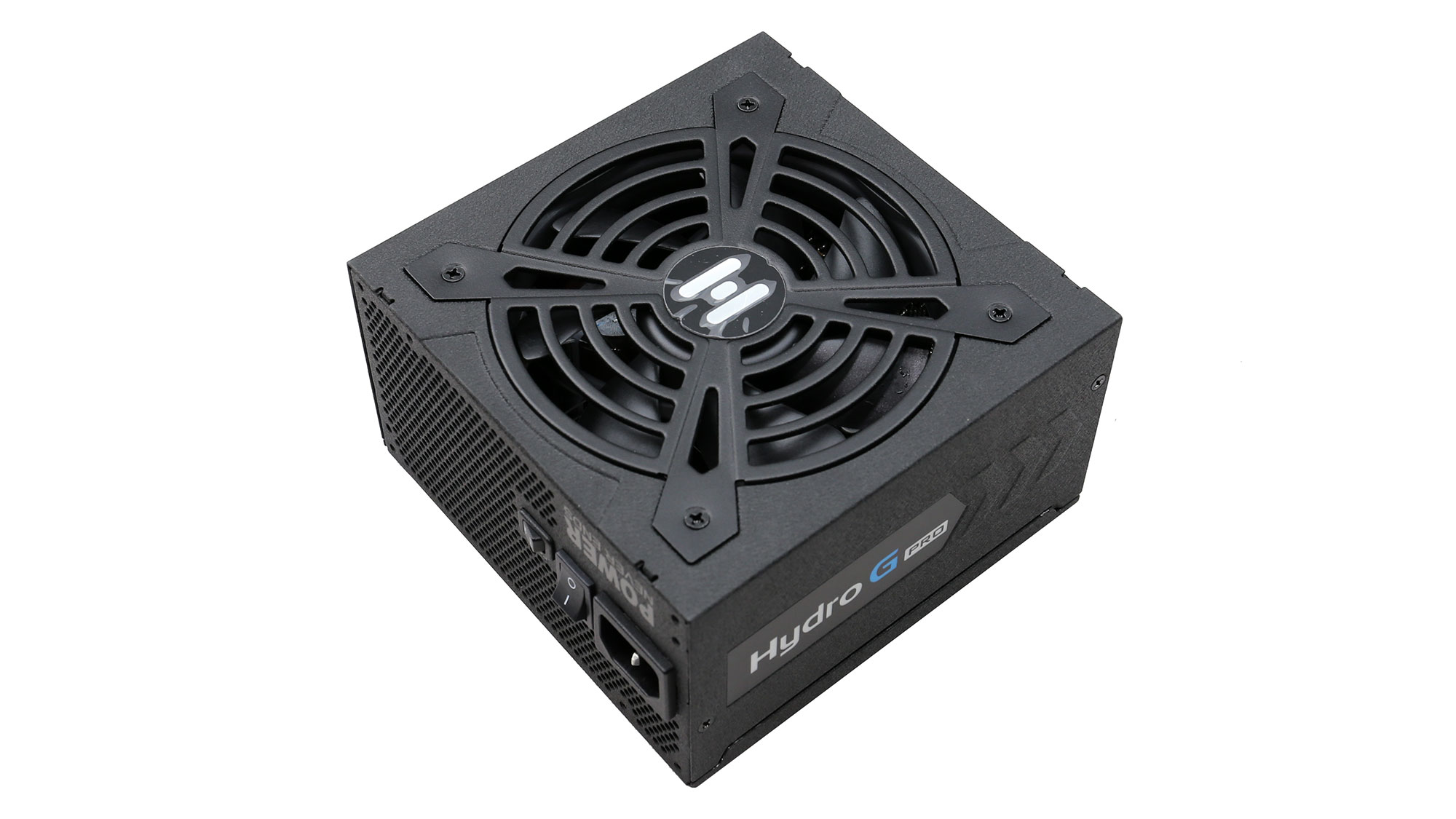

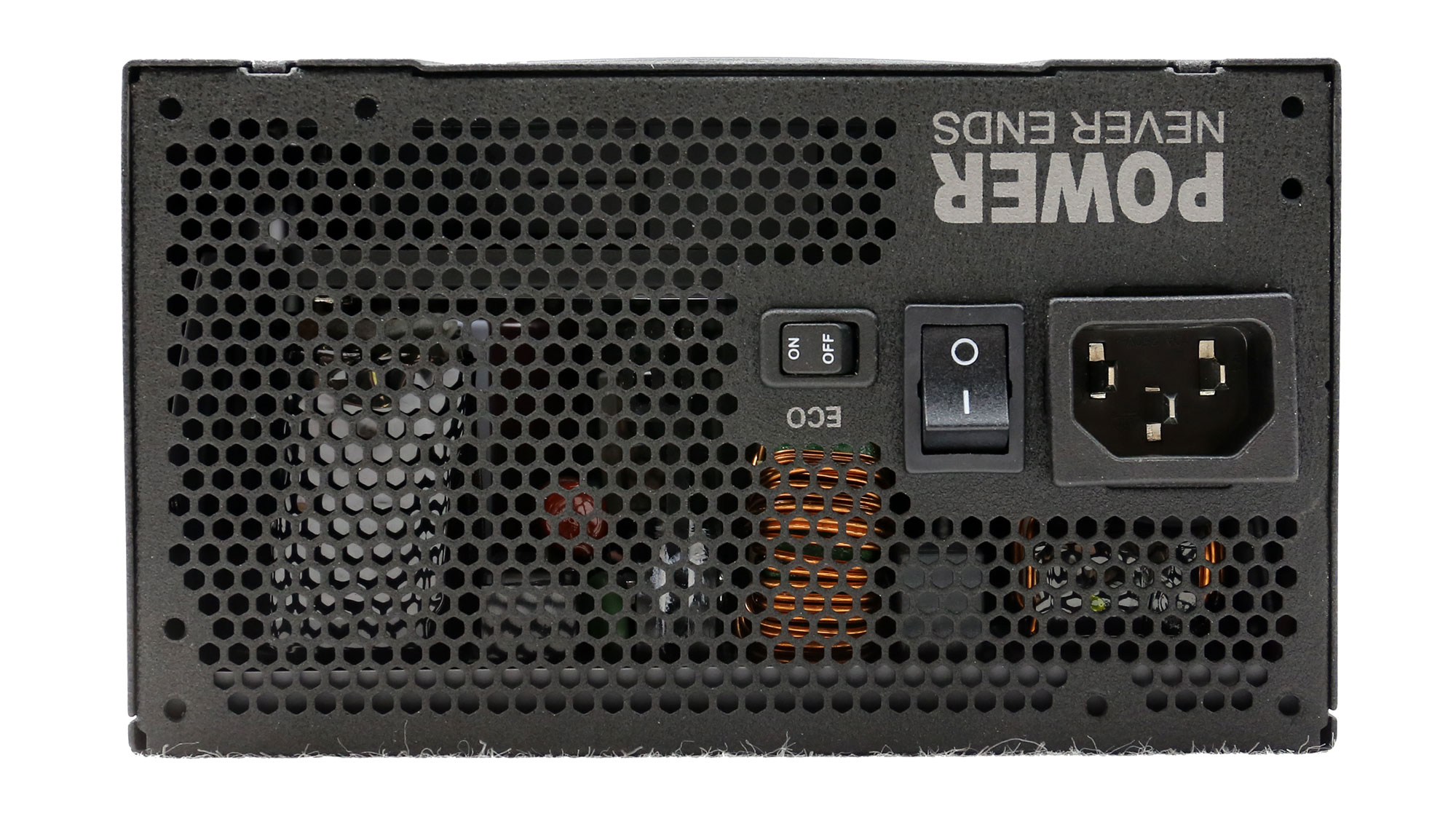
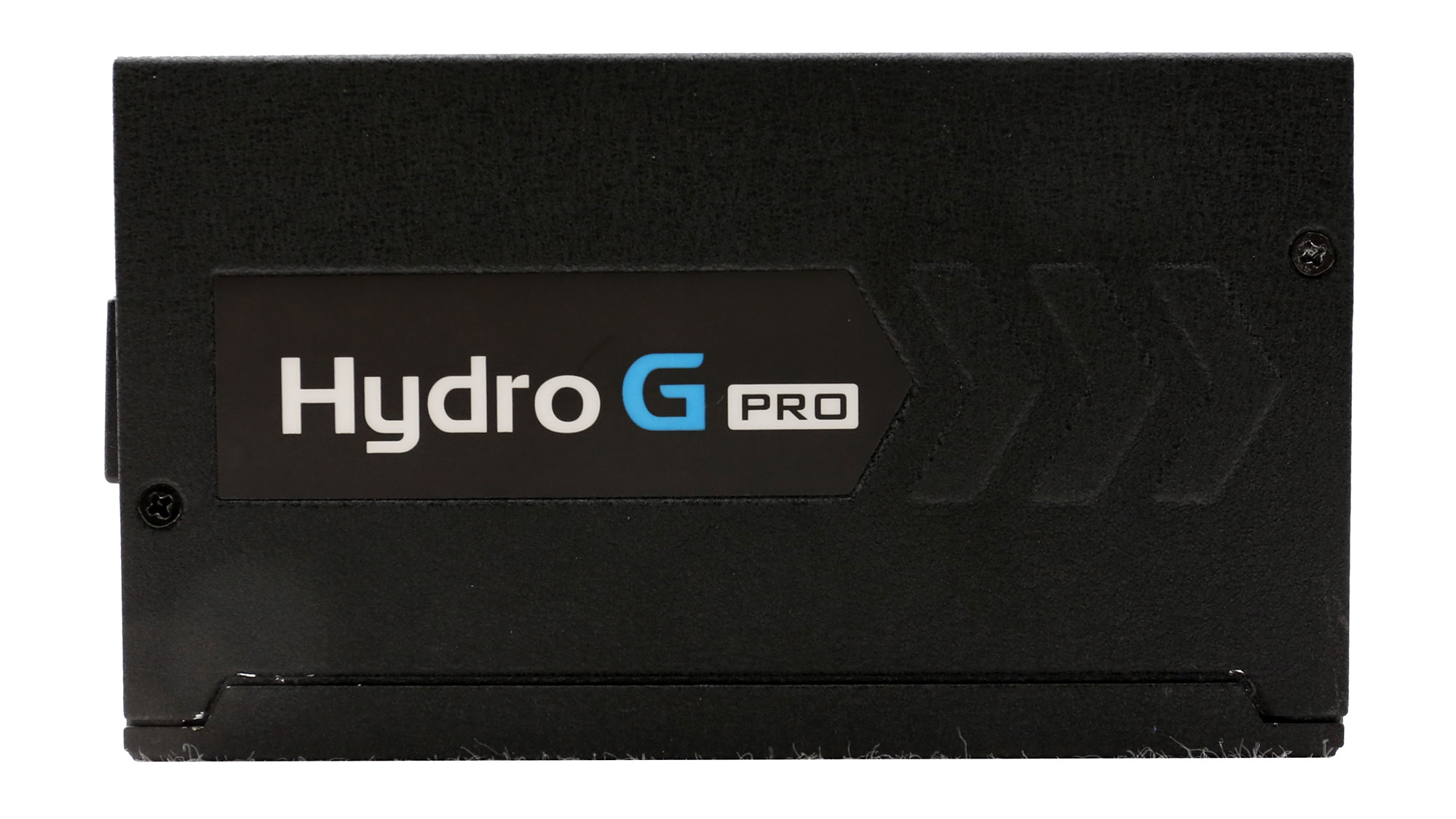



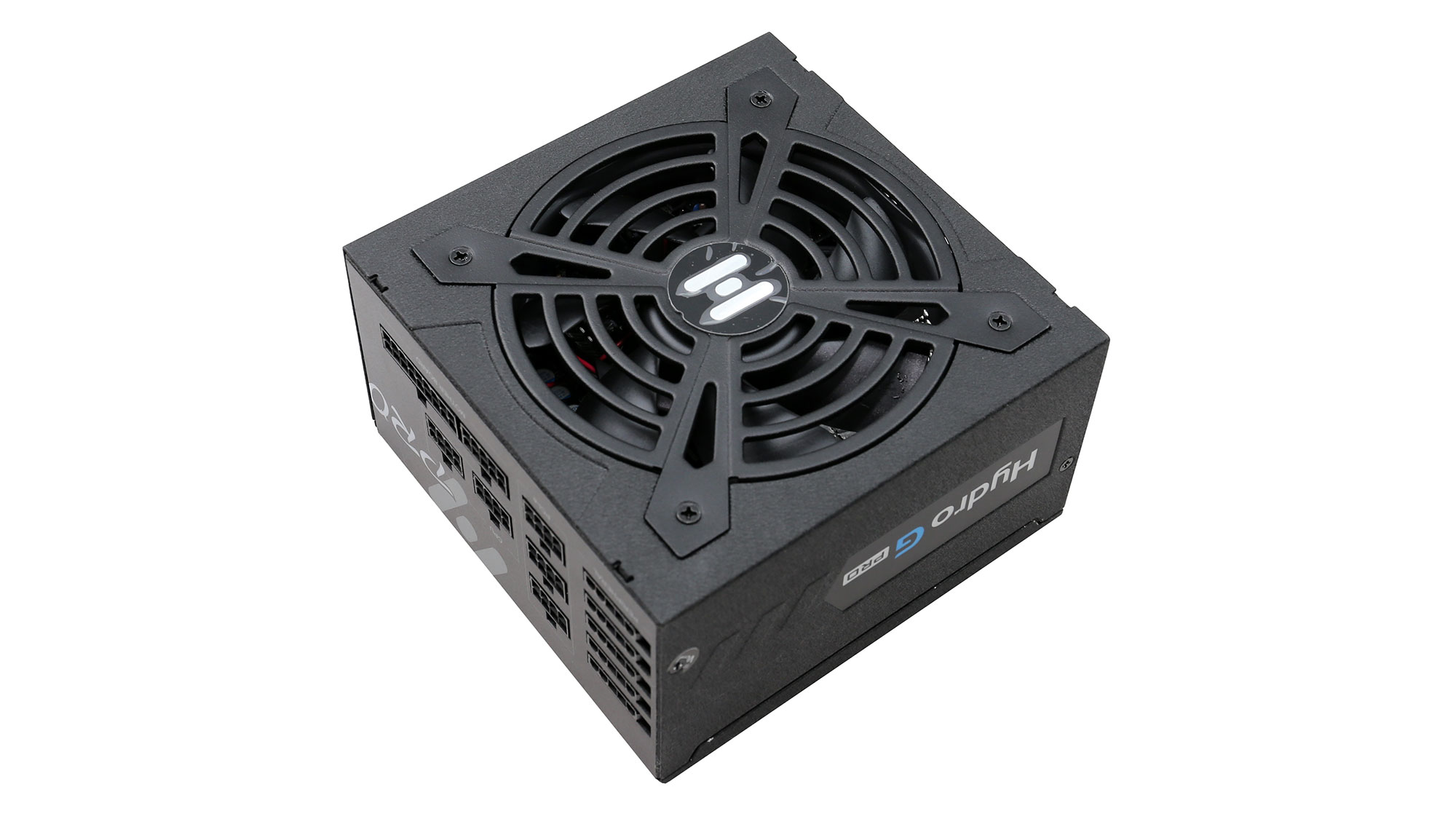



The FSP Hydro G Pro power supply, which we will evaluate today, is 80 PLUS Gold certified, while in the Cybenetics scale it earns an ETA-A rating (88-91% overall efficiency). In the noise output section, it definitely isn't whisper-quiet, with a Cybenetics LAMBDA-S++ noise badge. This is disappointing, as there are similar spec PSUs with much lower noise output (like the Corsair RM850x).

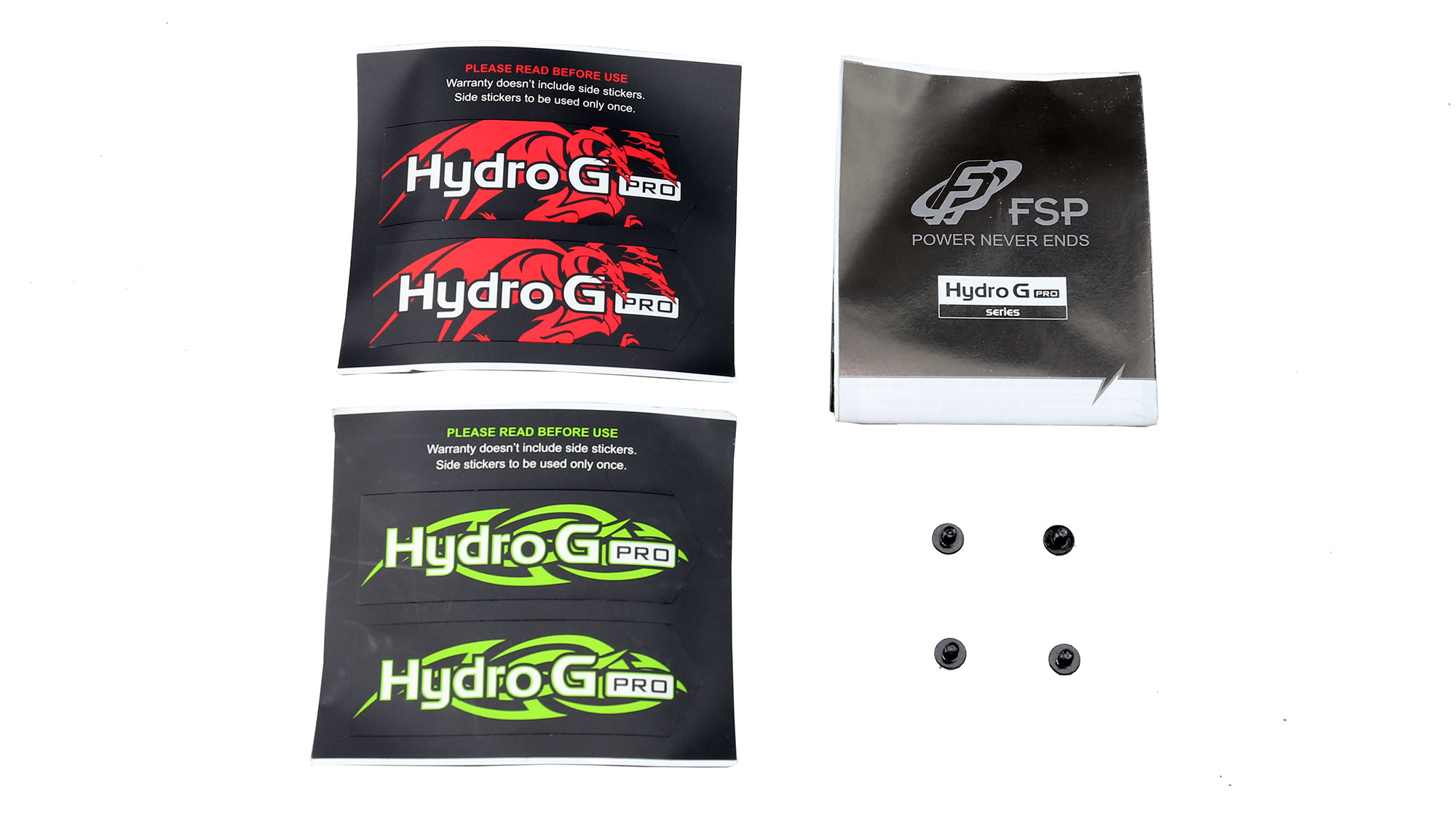
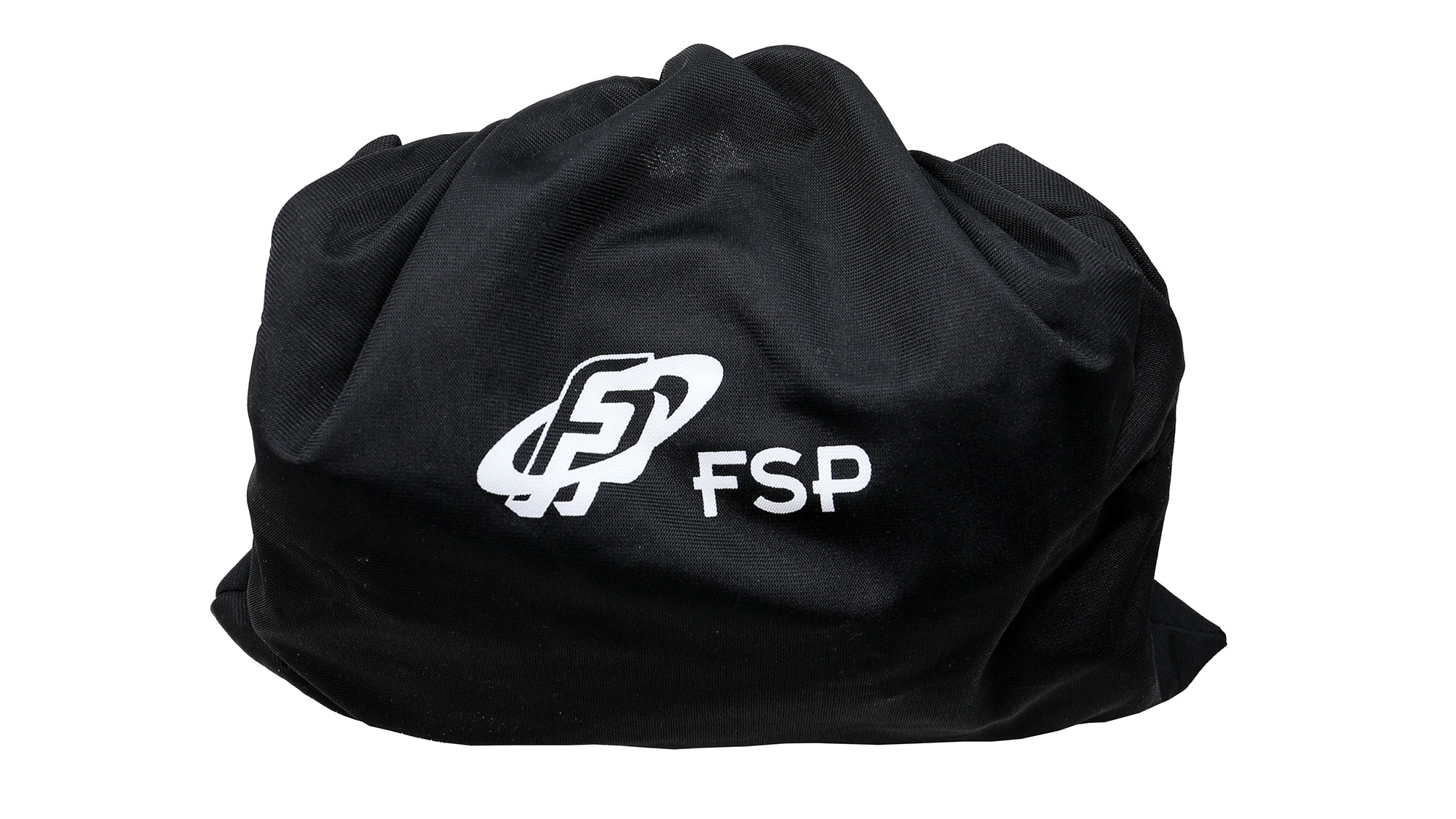

Specifications
| Manufacturer (OEM) | FSP |
|---|---|
| Max. DC Output | 850W |
| Efficiency | 80 PLUS Gold, ETA-A (88-91%) |
| Noise | LAMBDA-S++ (30-35 dB[A]) |
| Modular | ✓ (Fully) |
| Intel C6/C7 Power State Support | ✓ |
| Operating Temperature (Continuous Full Load) | 0 - 50°C |
| Over Voltage Protection | ✓ |
| Under Voltage Protection | ✓ |
| Over Power Protection | ✓ |
| Over Current (+12V) Protection | ✓ |
| Over Temperature Protection | ✓ |
| Short Circuit Protection | ✓ |
| Surge Protection | ✓ |
| Inrush Current Protection | ✓ |
| Fan Failure Protection | ✗ |
| No Load Operation | ✓ |
| Cooling | 120mm Fluid Dynamic Bearing Fan (MGA12012XF-O25) |
| Semi-Passive Operation | ✓ (Selectable) |
| Dimensions (W x H x D) | 150 x 85 x 150mm |
| Weight | 1.7 kg (3.75 lb) |
| Form Factor | ATX12V v2.4, EPS 2.92 |
| Warranty | 10 Years |
Power Specifications
| Rail | 3.3V | 5V | 12V | 5VSB | -12V | |
|---|---|---|---|---|---|---|
| Max. Power | Amps | 20 | 20 | 70.8 | 2.5 | 0.3 |
| Watts | 120 | 850 | 12.5 | 3.6 | ||
| Total Max. Power (W) | 850 |
Cables and Connectors
| Modular Cables | ||||
|---|---|---|---|---|
| Description | Cable Count | Connector Count (Total) | Gauge | In Cable Capacitors |
| ATX connector 20+4 pin (600mm) | 1 | 1 | 18-22AWG | No |
| 4+4 pin EPS12V (700mm) | 2 | 2 | 18AWG | No |
| 6+2 pin PCIe (650mm+150mm) | 1 | 2 | 18AWG | No |
| 6+2 pin PCIe (500mm+150mm) | 2 | 4 | 18AWG | No |
| SATA (520mm+150mm+150mm+150mm) | 1 | 4 | 18AWG | No |
| SATA (500mm+150mm+150mm+150mm) | 1 | 4 | 18AWG | No |
| SATA (500mm+150mm) / 4-pin Molex (+150mm+100mm) | 2 | 4 / 4 | 18AWG | No |
| SATA (500mm+150mm) / 4-pin Molex (+150mm) / FDD (+150mm) | 1 | 2 / 1 / 1 | 18-22AWG | No |
| AC Power Cord (1370mm) - C13 coupler | 1 | 1 | 18AWG | - |
All cables are long, and the distance between the peripheral connectors is sufficient, with the only exception being a pair of 4-pin Molex connectors. Moreover, the amount of cables is considerable given the PSU's capacity. With two EPS and six PCIe connectors, you won't have a problem powering a potent gaming station. Finally, the single FDD connector should be replaced with a 4-pin Molex, since those connectors are rarely used nowadays. It would be much better if an FDD adapter was provided instead, for users that might need it.

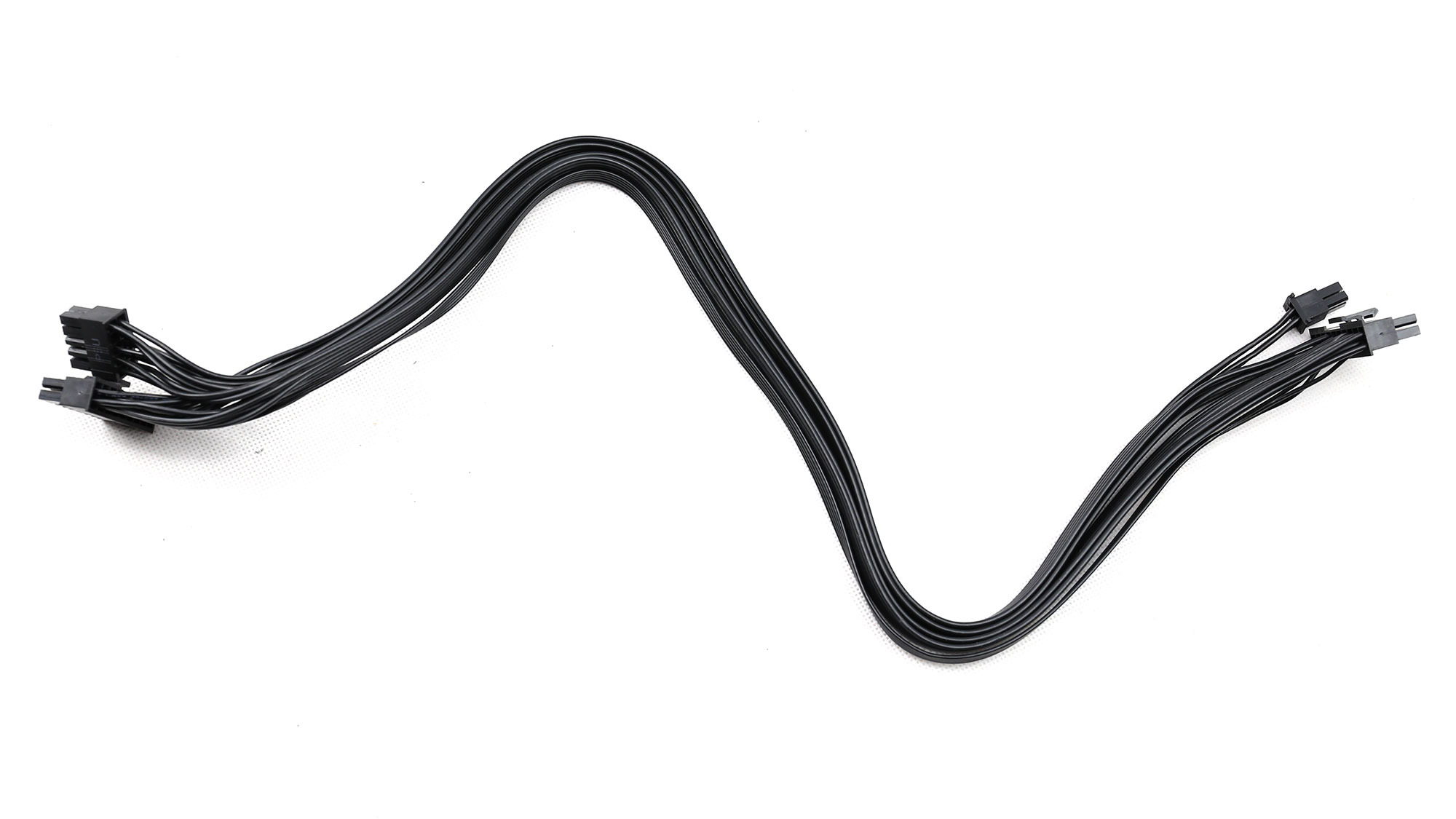




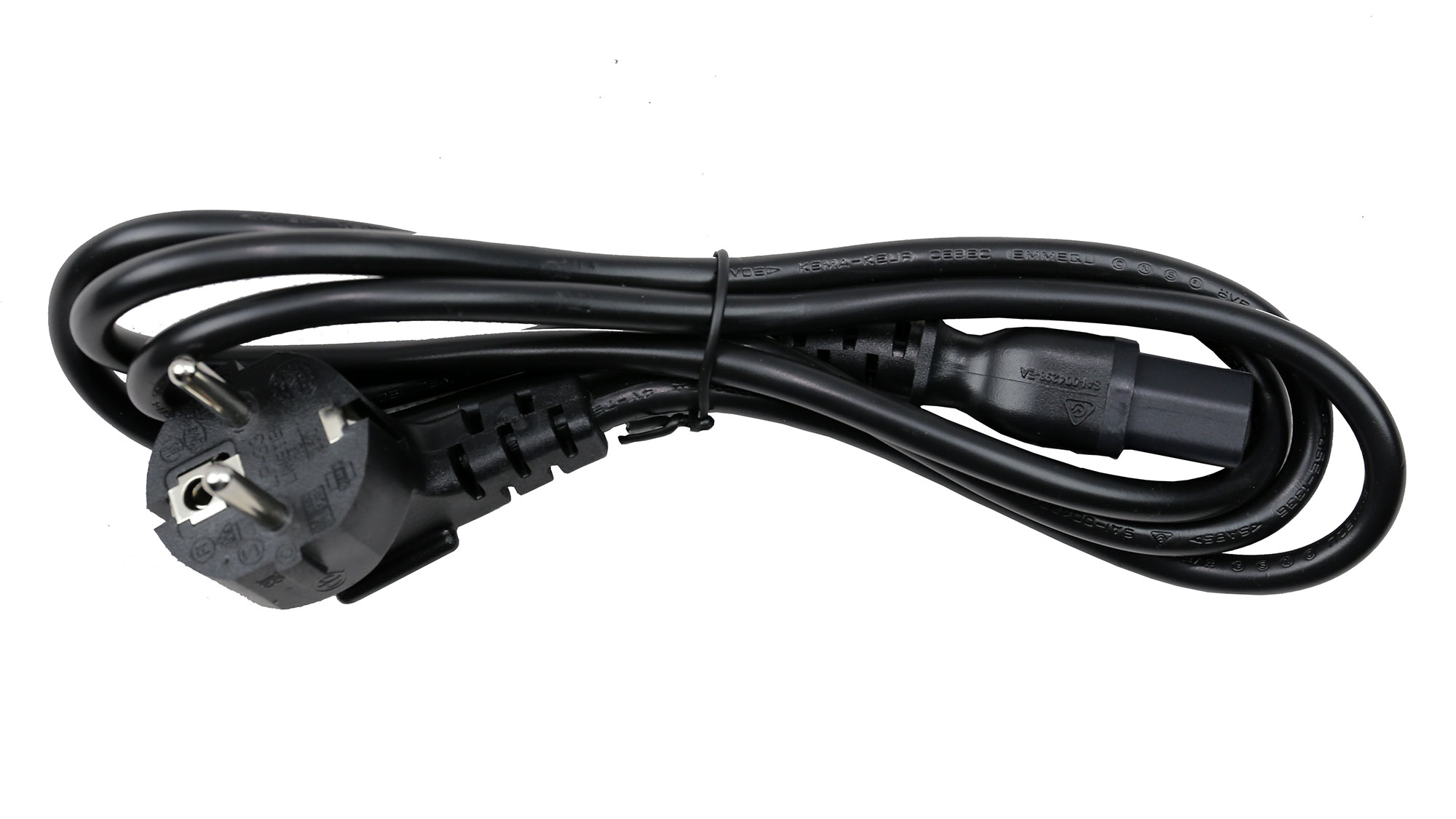
Component Analysis
We strongly encourage you to have a look at our PSUs 101 article, which provides valuable information about PSUs and their operation, allowing you to understand better the components we're about to discuss.
| General Data | |
|---|---|
| Manufacturer (OEM) | FSP |
| PCB Type | Double Sided |
| Primary Side | |
| Transient Filter | 4x Y caps, 2x X caps, 2x CM chokes, 1x MOV, 2x Gas Discharge Tubes |
| Inrush Protection | NTC Thermistor & Relay |
| Bridge Rectifier(s) | 2x HY GBJ2506 (600V, 25A @ 100°C) |
| APFC MOSFETS | 2x Infineon IPA60R180P7 (650V, 11A @ 100°C, 0.18Ohm) |
| APFC Boost Diode | 1x STMicroelectronics STPSC6H065 (650V, 6A @ 110°C) |
| Hold-up Cap(s) | 1x Nippon Chemi-Con (450V, 680uF, 3,000h @ 105°C, KHS) |
| Main Switchers | 2x STMicroelectronics STF28N60M2 (650V, 14A @ 100°C, 0.15Ohm) |
| APFC Controller | Infineon ICE2PCS02 |
| Resonant Controllers | Champion CM6901T2X |
| Topology | Primary side: Half-Bridge & LLC converter Secondary side: Synchronous Rectification & DC-DC converters |
| Secondary Side | |
| +12V MOSFETS | 4x Toshiba TPHR8504PL (40V, 150A @ 25°C, 0.85mOhm) |
| 5V & 3.3V | DC-DC Converters: 6x Diodes Incorporated DMN3009SK3 (30V, 60A @ 70°C, 5.5mOhm) PWM Controllers: ANPEC APW7159C |
| Filtering Capacitors | Electrolytics: 5x Nippon Chemi-Con (1-5,000h @ 105°C, KZE), 1x Rubycon (3-6,000h @ 105°C, YXG), 5x Rubycon (6-10,000h @ 105°C, ZLH), 2x Rubycon (6-10,000h @ 105°C, ZLJ) Polymers: 30x United Chemi-Con |
| Supervisor IC | SITI PS223H (OCP, OTP, OVP, UVP, SCP, PG) |
| Fan Model | Protechnic Electric MGA12012XF-O25(120mm, 12V, 0.52A, Fluid Dynamic Fan) |
| Fan Controller | APW9010 |
| 5VSB Circuit | |
| Rectifier | CET CEF04N7G FET(700V, 4A @ 25°C, 3.3Ohm) & PFC P15L50SP SBR (50V, 15A) |
What steals attention here, to the trained eye at least, is the quality of the bulk cap. Not only it is 450V rated, but it also has a rated lifetime of 3,000h @ 105 degrees C. The majority of power supplies, even high-end ones, use 2,000 hours at 105 degrees C bulk caps, so the HG2-850 has an edge here. The quality of the caps on the secondary side is at very high as well. Besides electrolytics, many polymer caps are also used.
Get Tom's Hardware's best news and in-depth reviews, straight to your inbox.



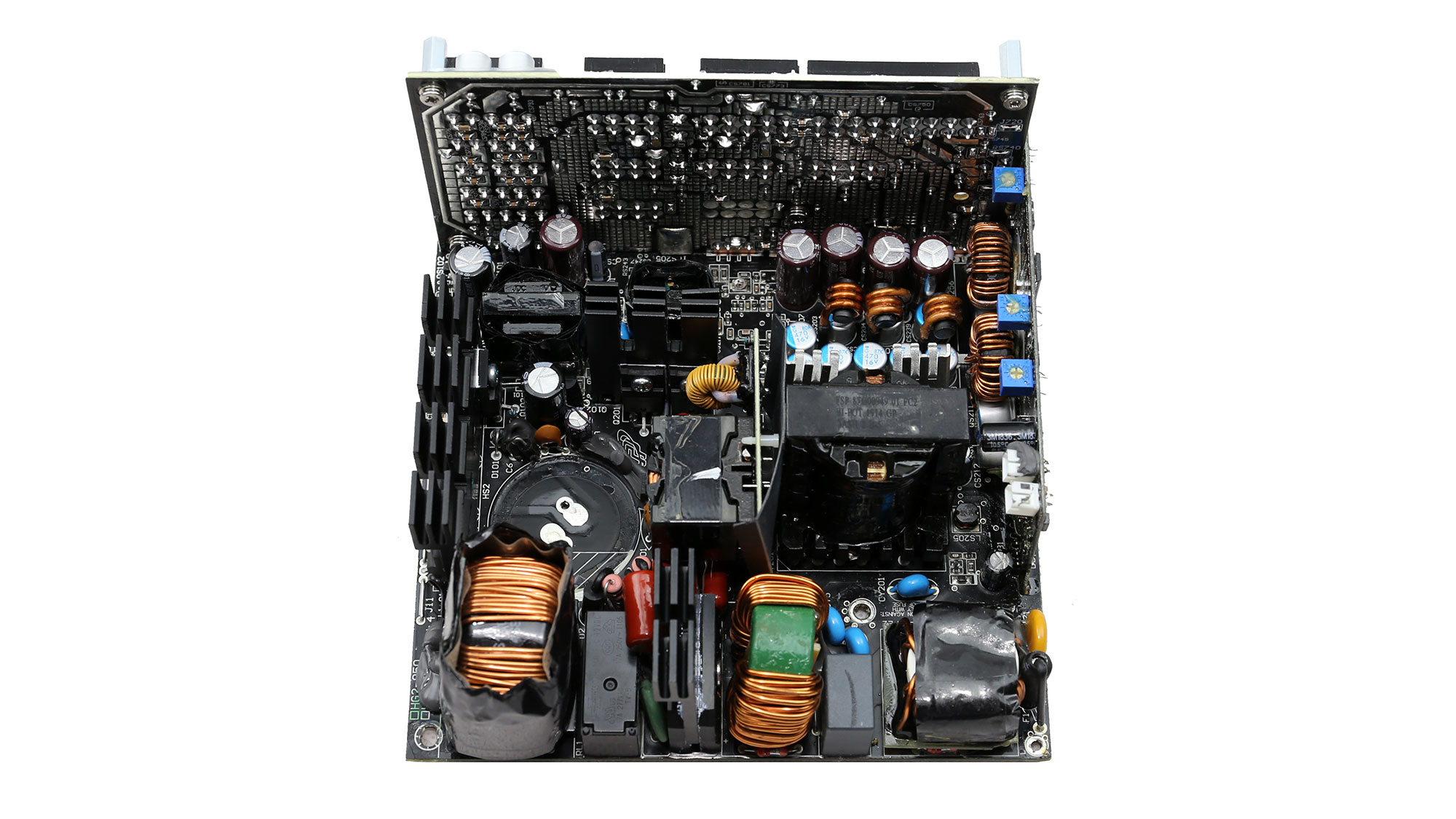
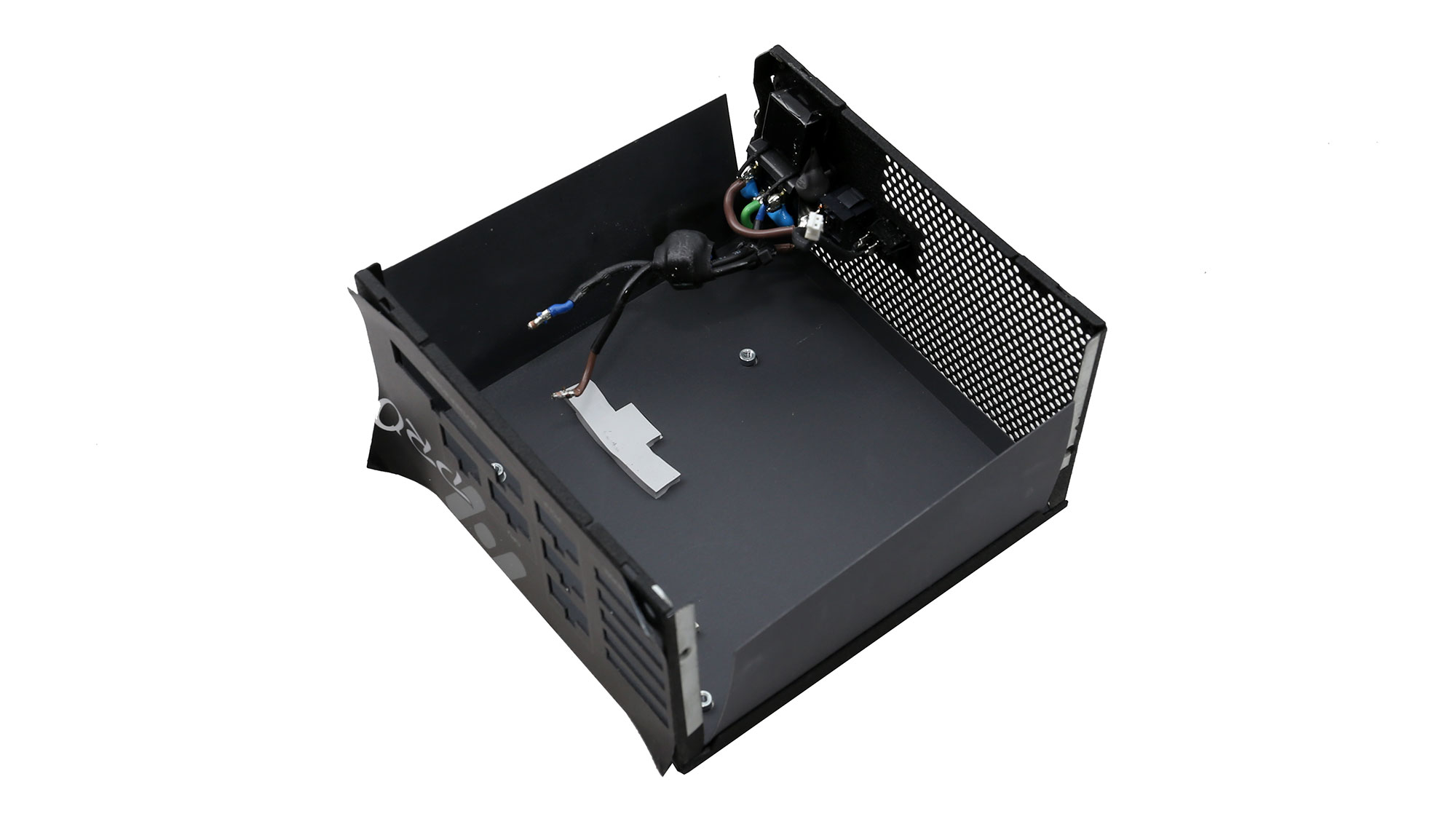




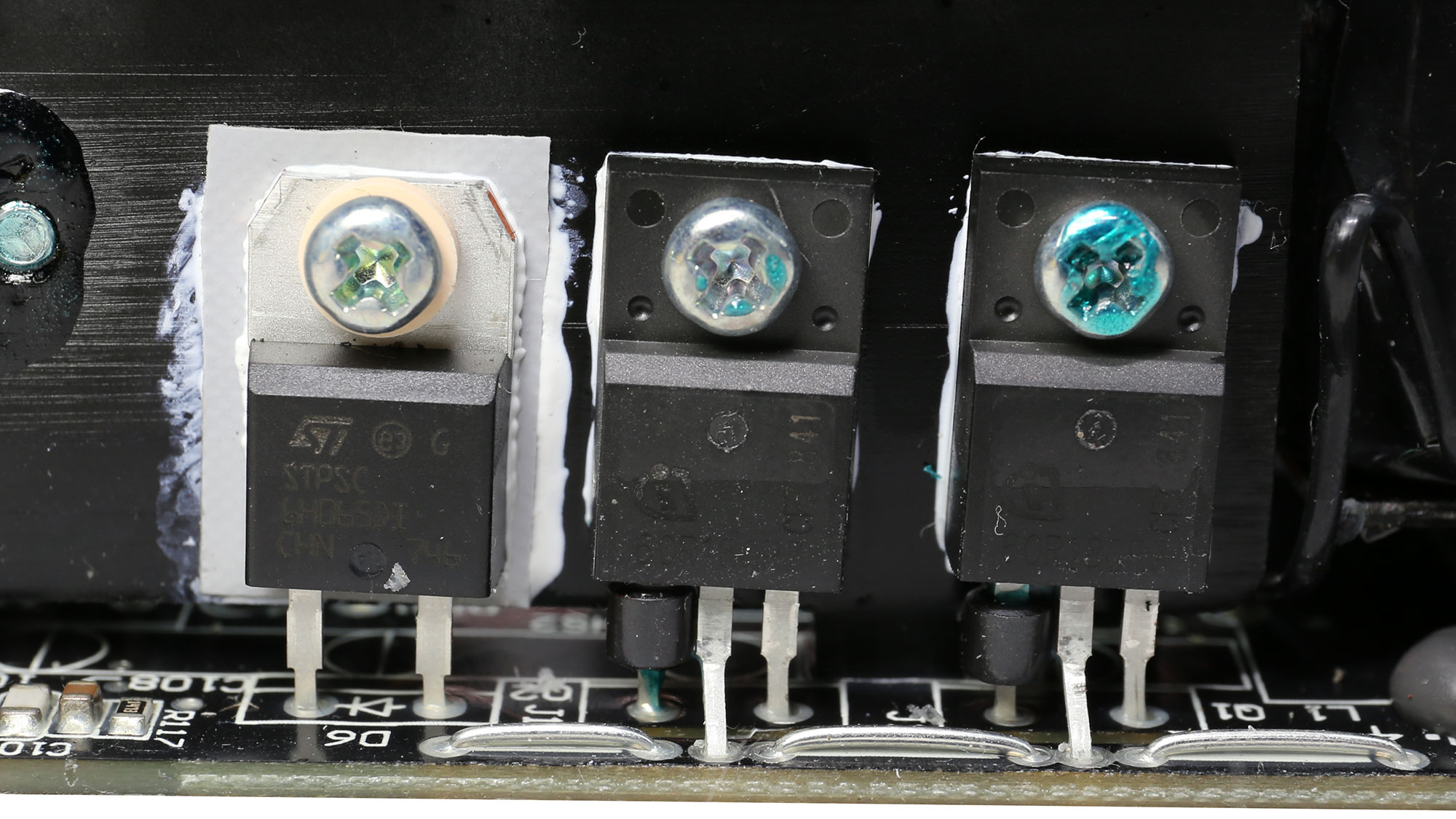


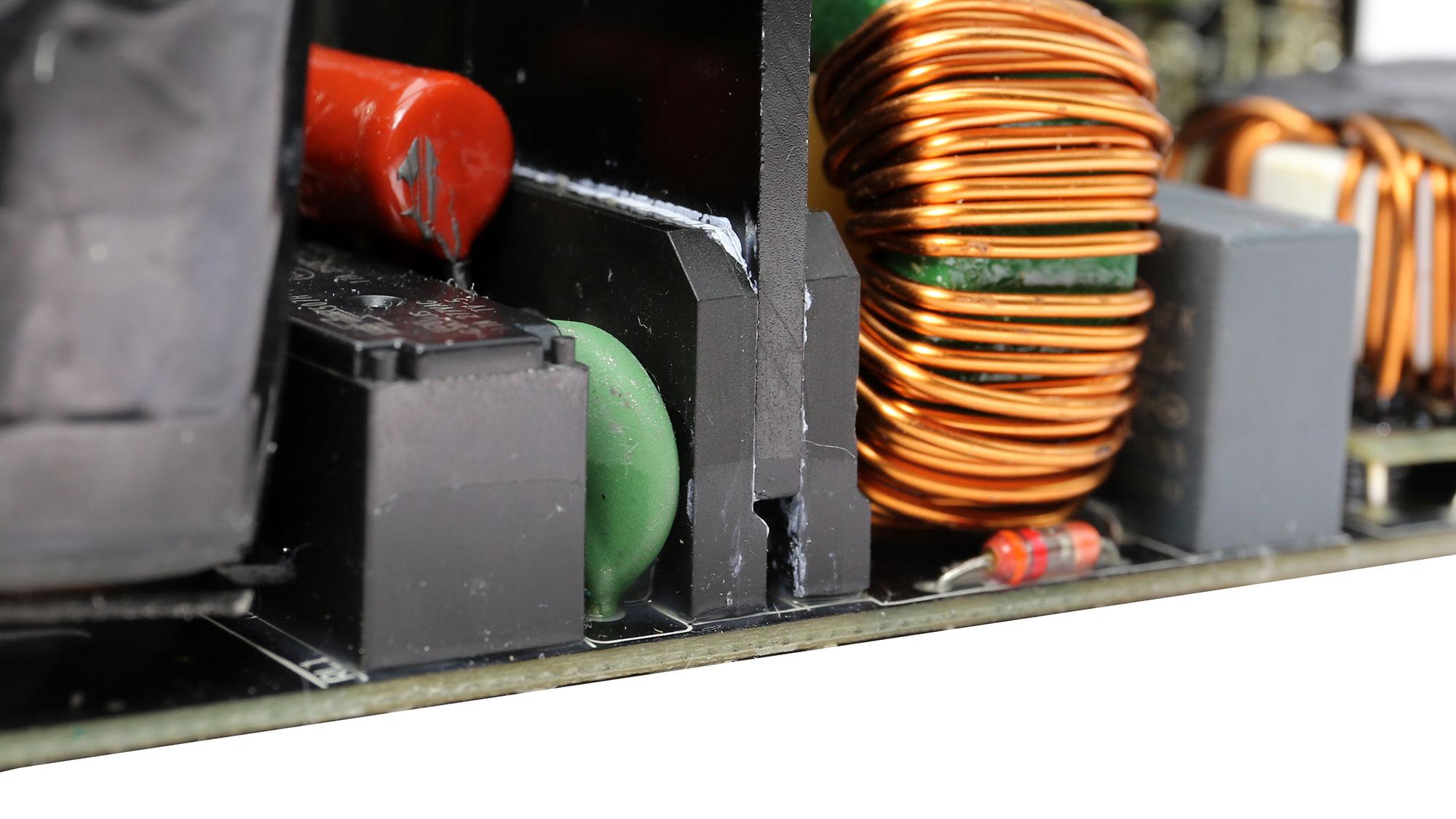
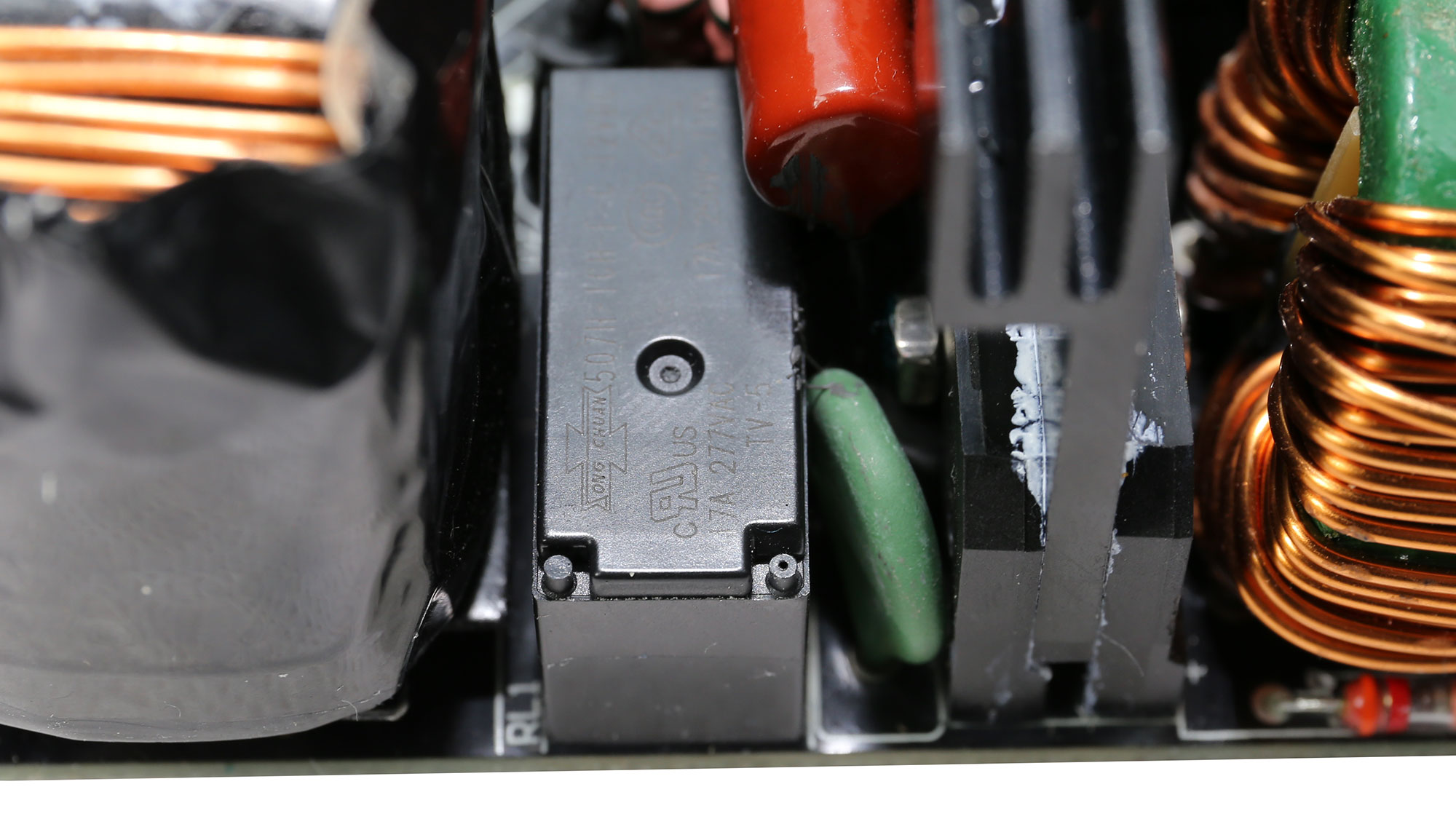



On the primary side, a half-bridge topology is utilized, along with an LLC resonant converter. This is typical stuff for high efficiency.
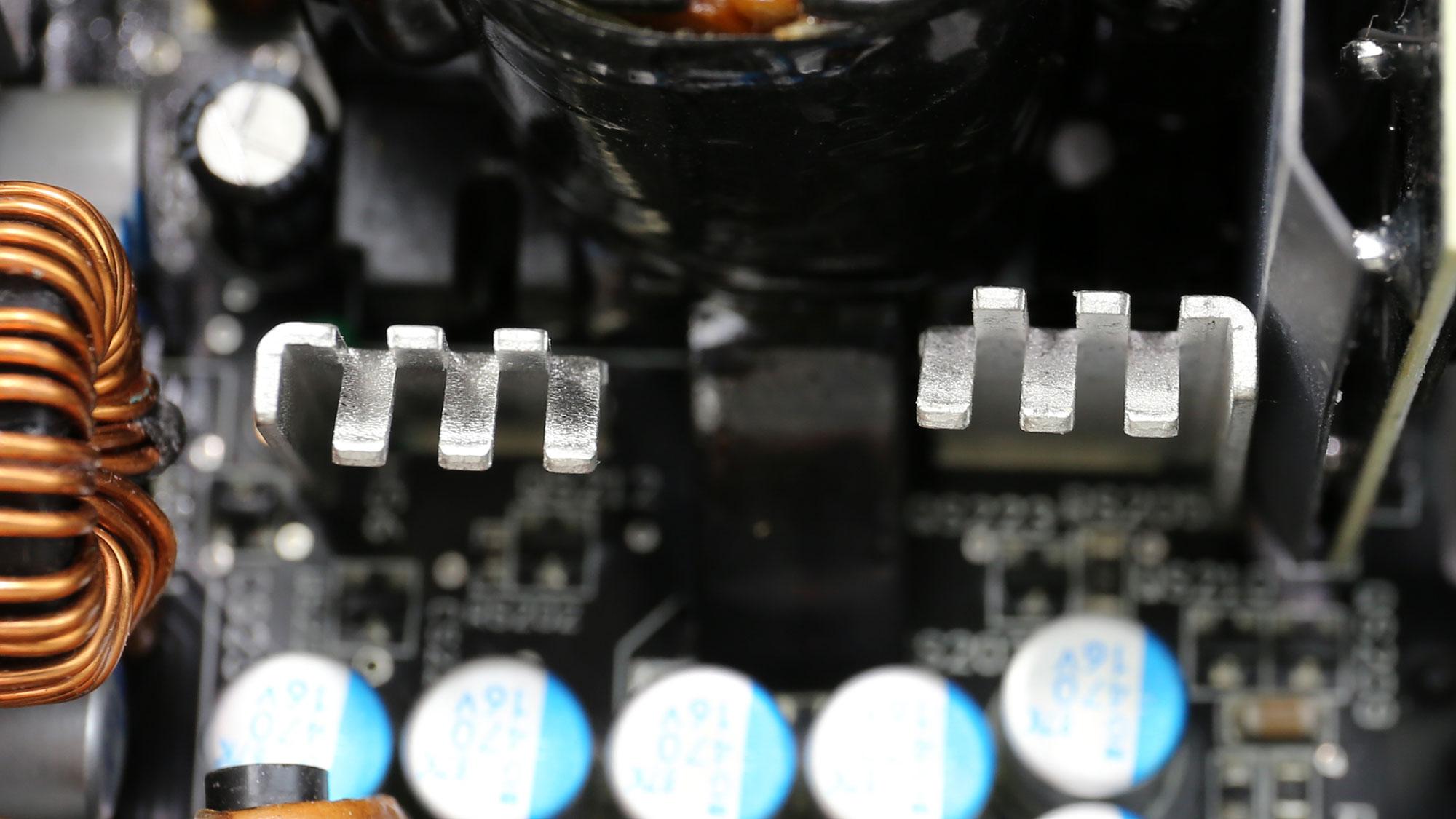
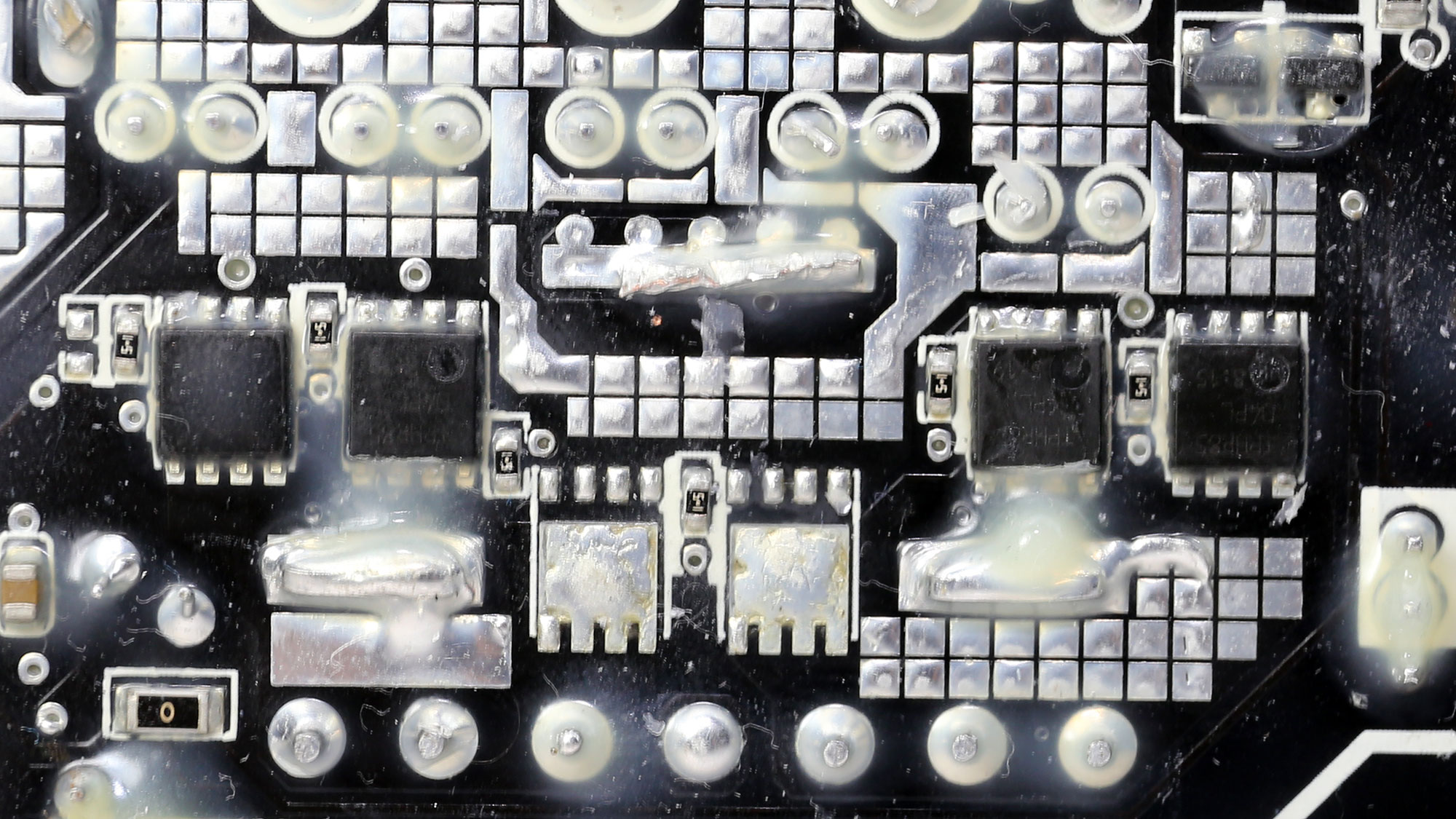
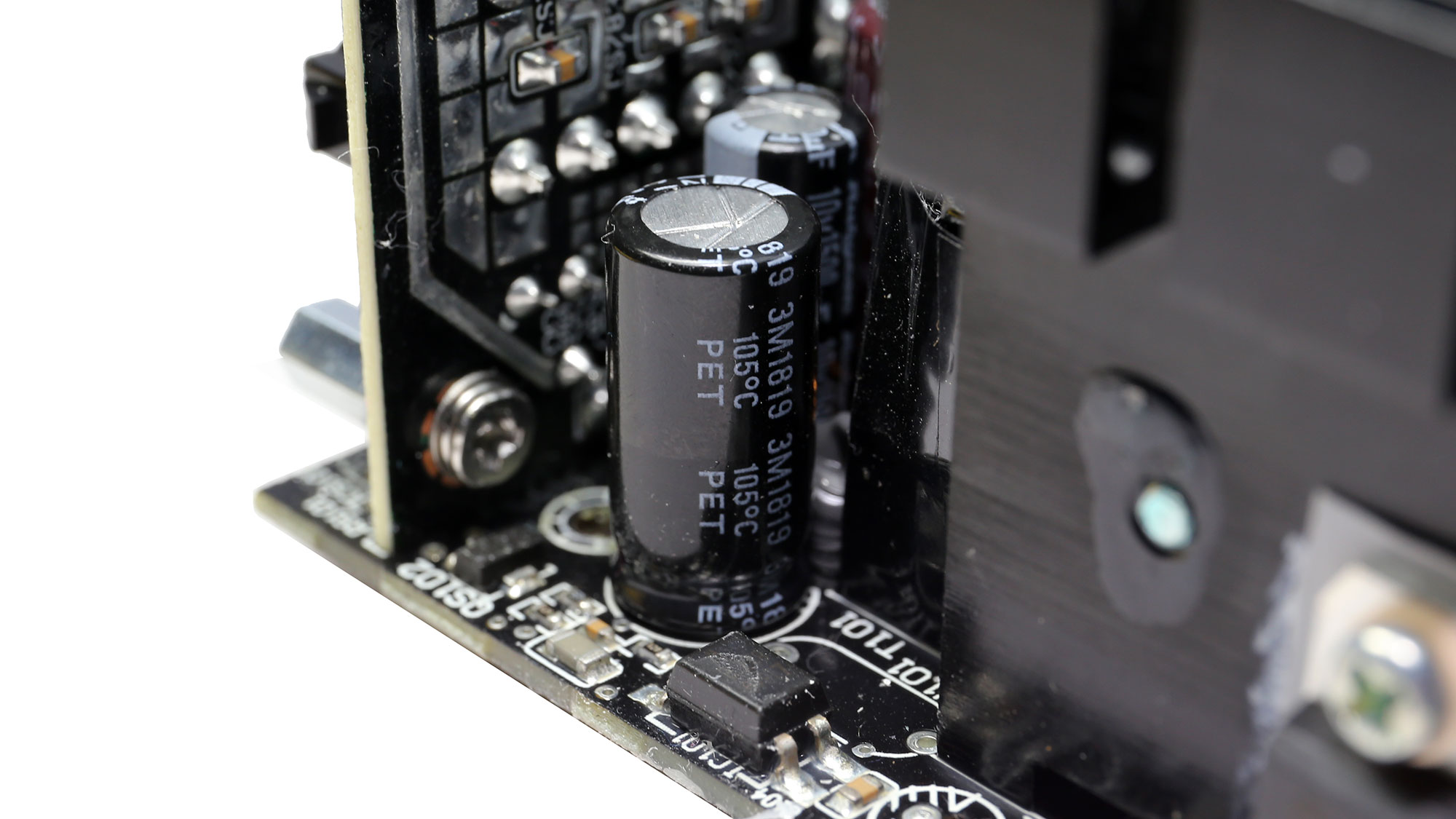
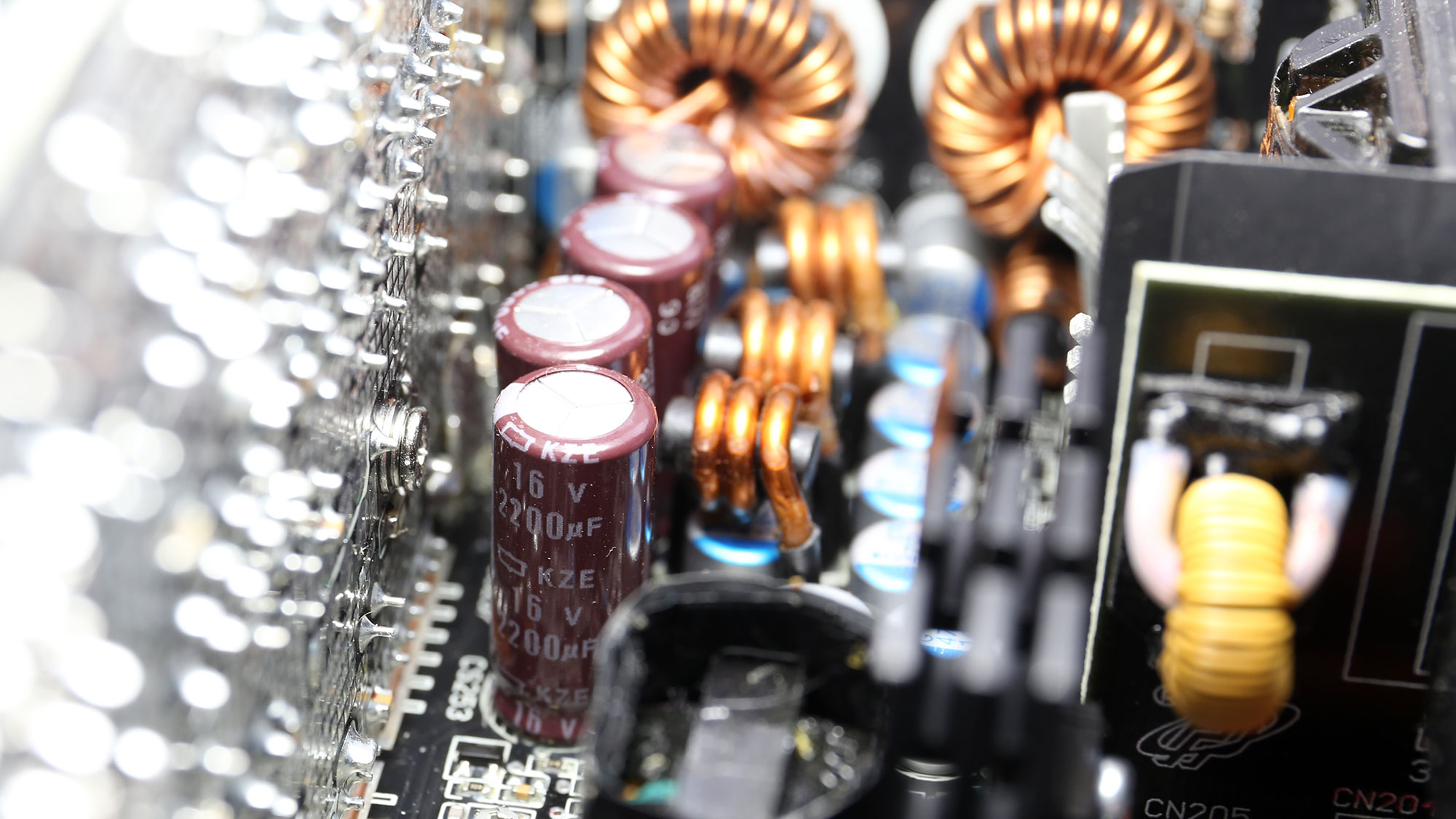







On the secondary side, four Toshiba FETs handle the +12V rail's load regulation, and a pair of DC-DC converters generate the minor rails.









The soldering quality is good. Moreover, there are many interesting parts on this side of the board.



At the front side of the modular board, many polymer caps are used as an extra ripple suppression filtering layer.


The cooling fan is of high quality, and it is powerful. A larger fan should be used though, to provide the same airflow at lower speeds (and with less noise).
MORE: Best Power Supplies
MORE: How We Test Power Supplies
MORE: All Power Supply Content
Current page: Specifications and Part Analysis
Next Page Load Regulation, Hold-Up Time, Inrush Current, Efficiency and Noise
Aris Mpitziopoulos is a contributing editor at Tom's Hardware, covering PSUs.